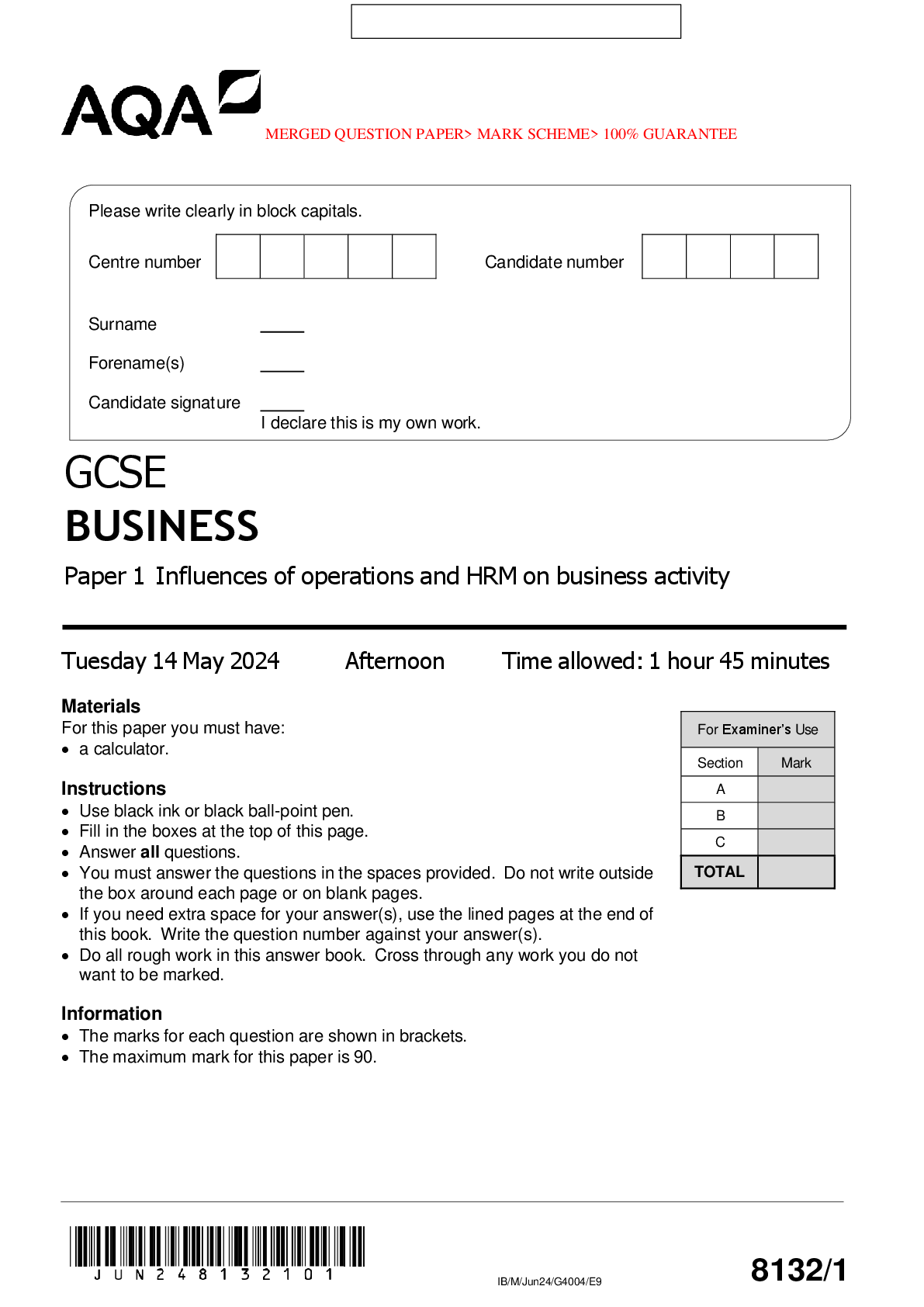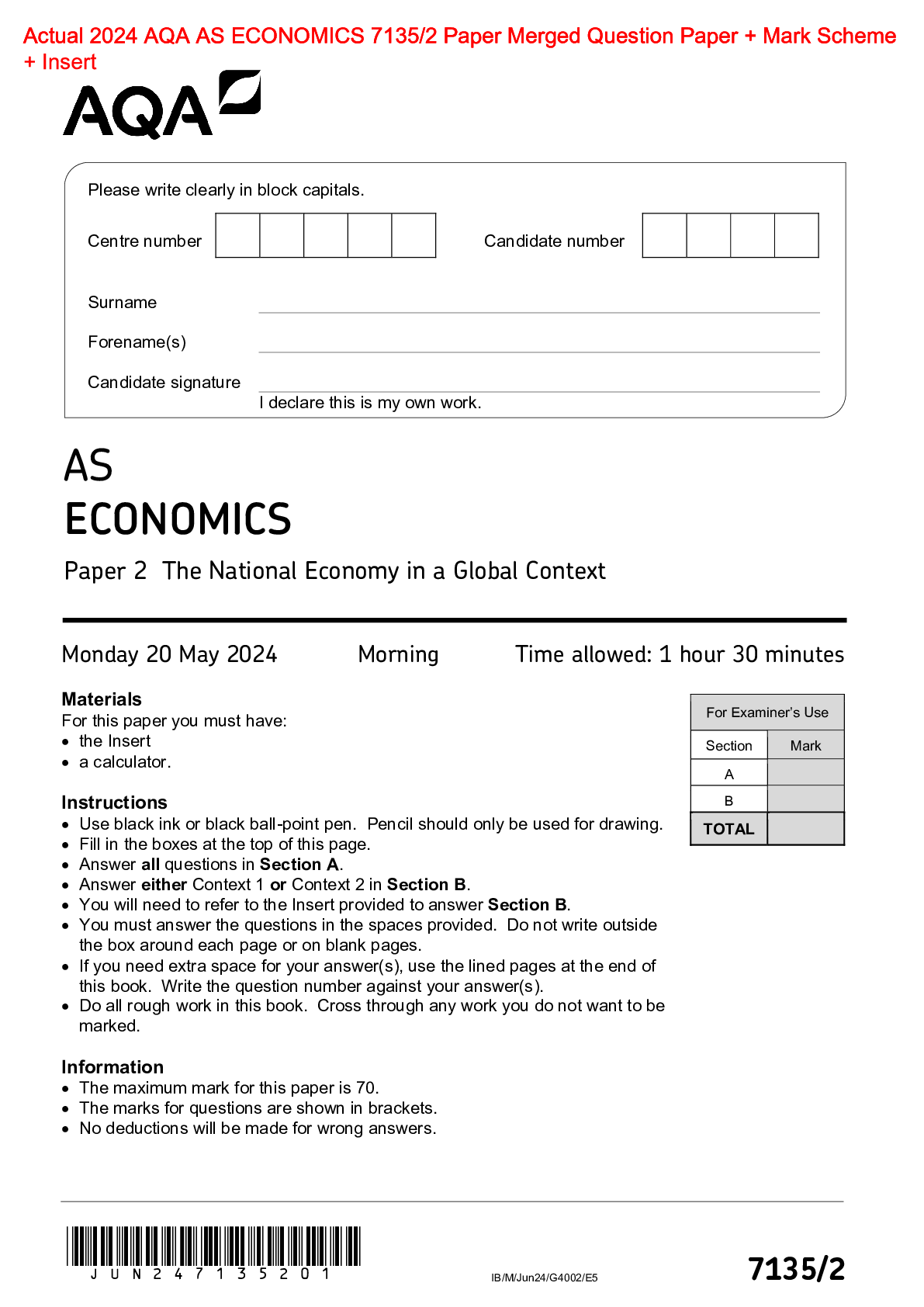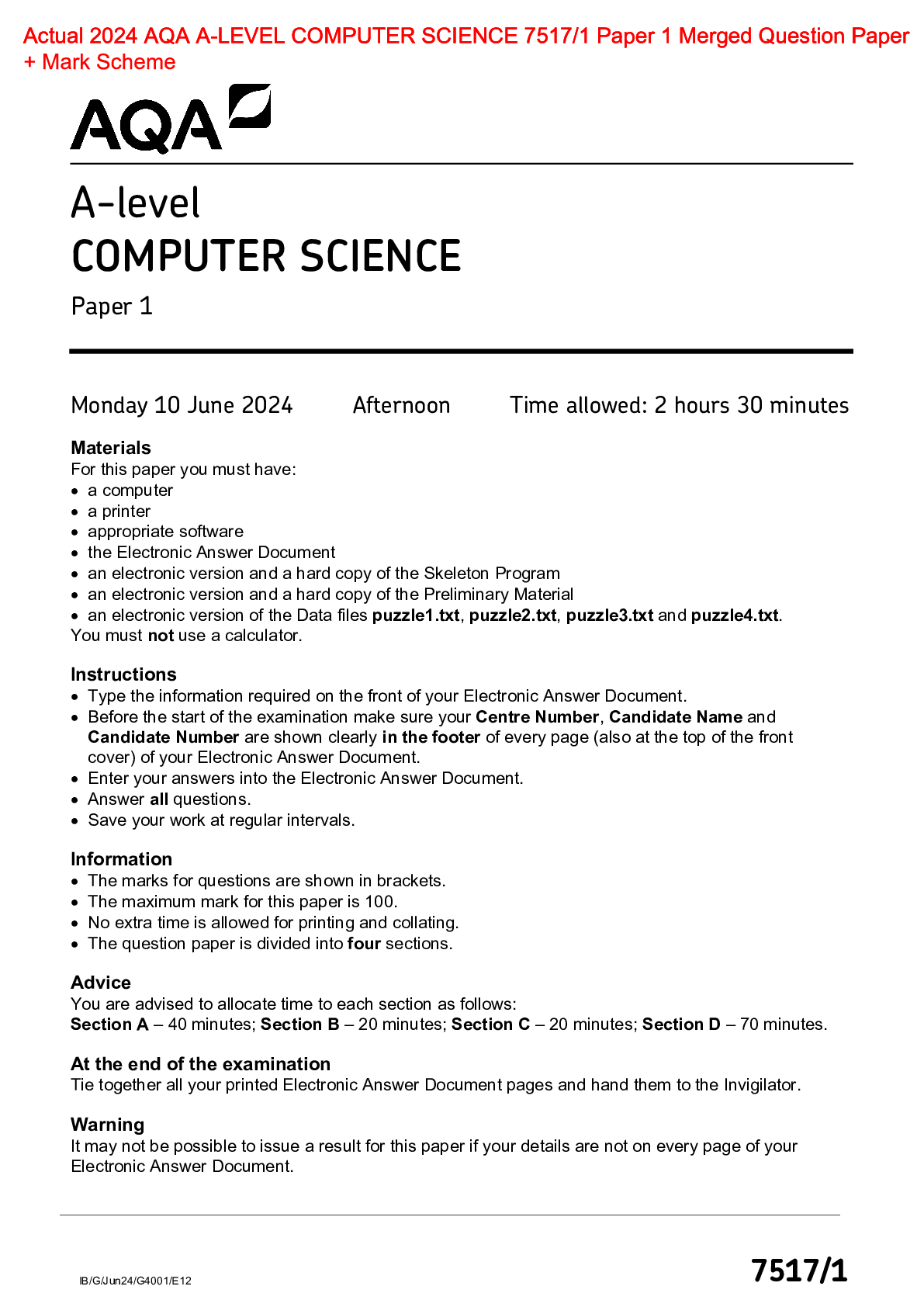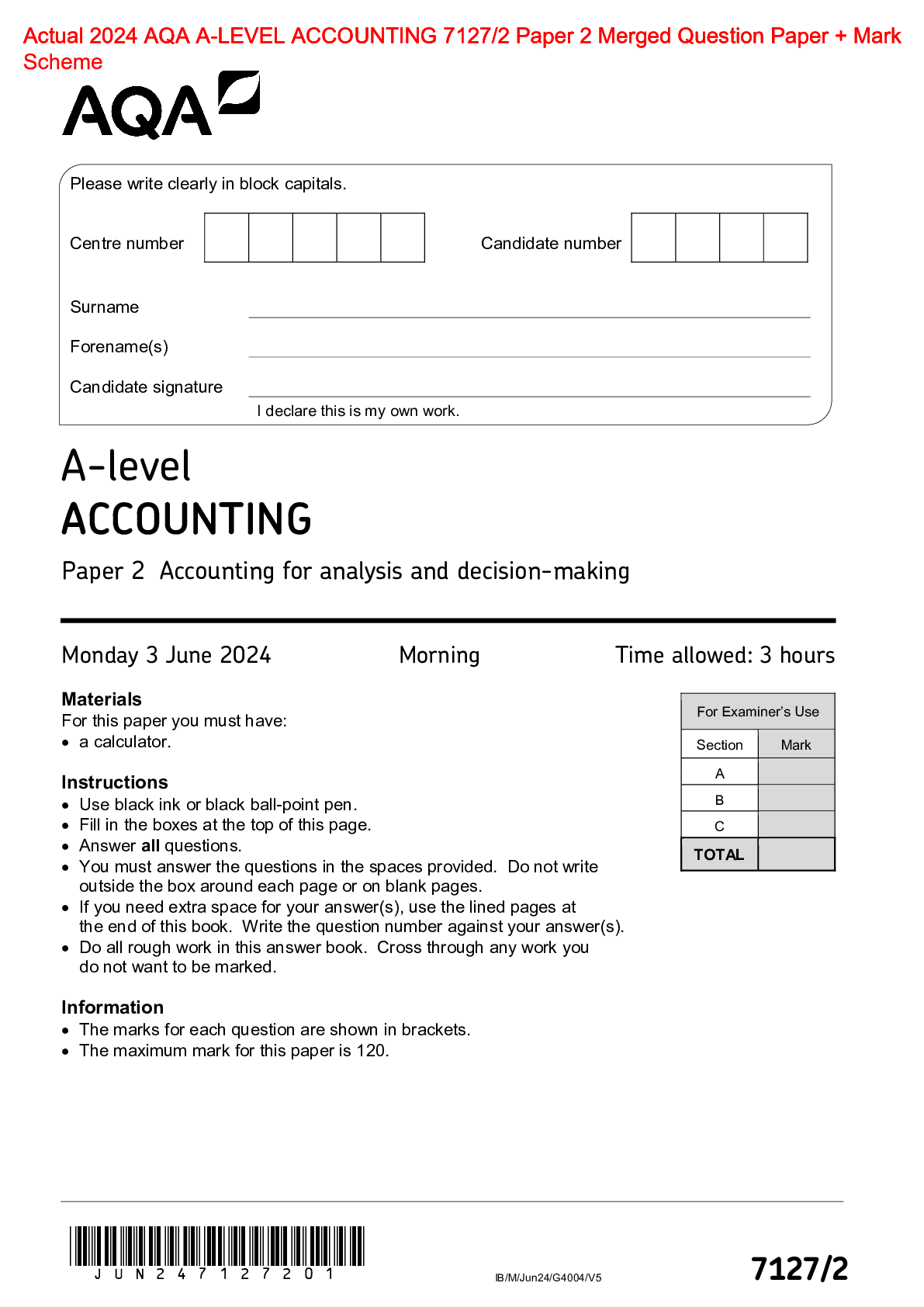Economics > AQA > AQA A-LEVEL Business: Unit 3 - Marketing and decision-making. Summer 2022/2023 (All)
AQA A-LEVEL Business: Unit 3 - Marketing and decision-making. Summer 2022/2023
Document Content and Description Below
Marketing - Ans-- finds out customers need & wants - anticipate what customers will want in future *Includes:* - research - analysis - planning - "marketing mix" Marketing objectives - Ans-- ... targets set for marketing department help businessess achieve overall objectives - targets tend to focus on sales i.e. increase company sales by 25% by end of 2019 Sales volume & sales value - Ans-- sales volume (number of unites sold) i.e. sell 500,000 units over a year - sales value (amount of money come in from sales) i.e. £500 million in sales over a year Sales growth - Ans-*EQ: sales growth (%) = sales this year - sales last year / sales last year x 100* - helps indentify if sales are being gained or lost - can be measured over any time period Market size - Ans-- total number of sales (or value of sales revenue) in a market over given period of time Market share - Ans-*EQ: market share (%) = sales / total market size x 100* - important to look at trends in market share & market share of competitors - *to increase:* entice customers from competitors or attract new customers in growing markets Market growth - Ans-*EQ: market growth (%) = new market size - old market size / old market size x 100* - helps indentify if market is growing (increasing demand) or if market is shrinking (decreasing demand). Brand loyalty - Ans-- having a recognisable brand image helps improve loyalty to brand - helps to hold on to existing customers - important when products are very similar, customers tend to purchase those that are more recognizable Repositioning - Ans-- changing a product, branding & image to shift to slightly different market sector i.e. Greggs from bakery to on-the-go food Internal influences on marketing objectives - Ans-- *Corporate objectives:* marketing objectives should be aligned with overall goals - *Finance:* finance department allocates marketing budget, affecting the ability of the department - *Human resources:* allocates the capacity of staff for marketing, fewer staff limits how effective marketing is at increasing sales volume External influences on marketing objectives - Ans-*Market:* state of the economy (economic boom = attempt to increase sales volume, recession = attempt to maintain market share) *Technology:* - rapidly changing technology shortens product life cycles, creates many opportunities. - goals are often based on sales & price to maintain competitiveness *Competitors:* actions of competition affect objectives i.e if competitors focus on low prices, marketing may focus on consumers seeing them as price competitive *Ethics & environmental factors:* awareness increasing amongst consumers, harmful actions damage brand image, marketing consider this i.e. using less packaging to show environment conscious Non-price competition - Ans-- rivalry based on factors other than price (i.e. advertising, sales promotion, newest products) USP - Ans-- *USP meaning *'unique selling point'* - difference between competitor products that makes a product stand out Predatory pricing - Ans-- cutting prices to force competitor out of market - illegal in EU & US Marketing mapping - Ans-- shows both extremes of any of measures on a matrix in a simple way: *Measures:* - low vs. high price - low vs. high quality - basic vs. luxurious - youth vs. mature appeal *Importance:* - can help to spot gap in market - identify closest competitors - show how much customers are willing to pay Main reasons for market research - Ans-- spot opportunities (i.e. buying patterns, growing markets, declining markets) - decide what to do next (i.e. develop advertising campaign before product launch) - identify is current strategies are working Quantitative market research - Ans-- produces numeral statistics (facts & figures) - often based on larger samples that can be shown on graph & used to find correlations - collected using survey with fixed, predetermined answer choices - tend to be easier to collect (online, questionnaire, telephone) Qualitative market research - Ans-- looks into opinions, attitudes, beliefs & intentions of consumers - not necessarily statistically valid but can identify things that quantitative data cannot - focus groups discussing a product i.e. interviews with open questions - tend to be more time-consuming & expensive Primary Research - Ans-- when a business gathers new data first-hand (or outsources) - sampling gives predictions on entire market i.e. test marketing in a region to research customer response before launching nationwide - specific for purpose (good for niche markets) - labour-intensive, expensive, slow *Types of primary research:* - questionnaires - interviews - surveys - product reviews Types of Secondary Research - Ans-- using data that already exists (collected by someone else for another purpose) *Internal:* feedback from employees, sales reports, financial data *External:* government publications (Social Trends report), marketing agency, pressure groups, trade magazines, stock market - easier, faster to collect & cheaper - not always specific, can contain errors, be out-of-date - ideal for initial understanding of market, business may want to carry out specific primary research in areas not covered by secondary research. Types of sampling - Ans-*Random sampling:* - picked random from a pool (equal chance of selection) *Stratified sampling:* - population divided into groups (stratum) to create representative sample, then picked at random proportional to size of stratum *Quota sample:* - people are targeted for specific purpose, i.e mothers between 30 & 40), to get opinions from targeted consumers. Bias - Ans-- factor that causes research to be unrepresentative of whole population, - leading questions - choice of sample methods Correlation - Ans-- measure of how closely two variables are related - may be positive or negative, strong or weak or no apparent correlation at all - external factors have to be taken into account as this can be the cause of a correlation - closer line of best fit to correlated points, stronger the correlation Market research constraints - Ans-- budgetary constraints - time & resource constraints - reliability of data - ethical & legal constraints Extrapolation - Ans-- trends can be continued into future (extrapolated), i.e. to forecast future sales - in reality, trends will not be perfect however averages can be created - useful in stable environments - sudden unexpected events not taken into account i.e. new technology, global event (i.e. 9/11) Confidence intervals (margin of error) - Ans-- always some inaccuracy in sample - calculating a range of values you are fairly sure the population lies within - indicates how sure you are of something i.e. 95% confidence level that % of satisfied customers lies within 82% & 86%. - show uncertainty as well Value of technology - Ans-*Information:* - use technology to gather information & to promote products/services, targeting specific groups - search engines & social media used to analyse customers interested, based on their activity - this helps target specific demographics who like similar products - this is effective as it is specific to the consumer - it is cheaper and provides faster results *Analysis:* - software can process huge databases ('big data'), - helps to reduce human error - indentifies useful correlations *Limitations:* - expensive to purchase & upgrade - staff need to be trained (may require outsourcing) Price elasticity of demand (PED) - Ans-*EQ: PED = % change in quantity demanded / % change in price* - shows how price affects demand - always a negative (ignore minus) - products can be *price elastic (greater than 1)* = % change in demand greater than % change in price - product can be *price inelastic (less than 1)* = % change in demand less than % change in price PED affect revenue & profit - Ans-*Price elastic:* - price rise will make sales revenue go down (money lost from % ↓ in sales more than % ↑ of price) - decrease in price will increase sales revenue *Price inelastic:* - price rise will make sales revenue go up (money lost from % ↓ in sales less than % ↑ of price) - decreases in price will decrease sales revenue PED & ease of switching - Ans-- brand loyalty makes products less price elastic (i.e. Apple) - PED increases over time as customers find alternatives - internet makes it easy to find alternatives increasing PED - product types tend to be inelastic but individual brands tend to elastic (i.e. petrol inelastic but sales of individual company are elastic) - more expensive items tend to be elastic, less expensive more inelastic (i.e. car vs newspaper) Income elasticity of demand (YED) - Ans-*EQ: YED = % change in quantity demanded / & change in real income - demand is also influenced by income of consumers - split into categories based on quality of goods: *Normal goods (or necessities):* fruits, vegetables - YED less than 1, more than 0 (i.e. +0.6) - income rises = demand rises, but at a slower rate *Luxury goods:* designer clothes, fine wine - YED more than 1 (i.e. +1.5) - income rise = demand rises, but at a faster rate *Inferior goods:* cheaper 'value products - negative YED less than 0 (-0.6) - income rises = demand falls, income falls = demand rises Elasticity (PED & YED) influence decisions - Ans-*PED:* - decide whether to raise or lower price, they can see how sales & sales revenue will be affected *YED:* - see what will happen to sales if economy grows or shrinks i.e. tomato soup (PED = -3.0, YED = -0.5) - reduce price to increase demand, is profit margin allows - during boom, sales will fall so brand image may need to be changed STP - Ans-*Segment:* particular group with similar characteristics *Target:* decide which market segment to focus on and adapt product & marketing mix to this group *Position:* placing the product [Show More]
Last updated: 3 years ago
Preview 1 out of 18 pages
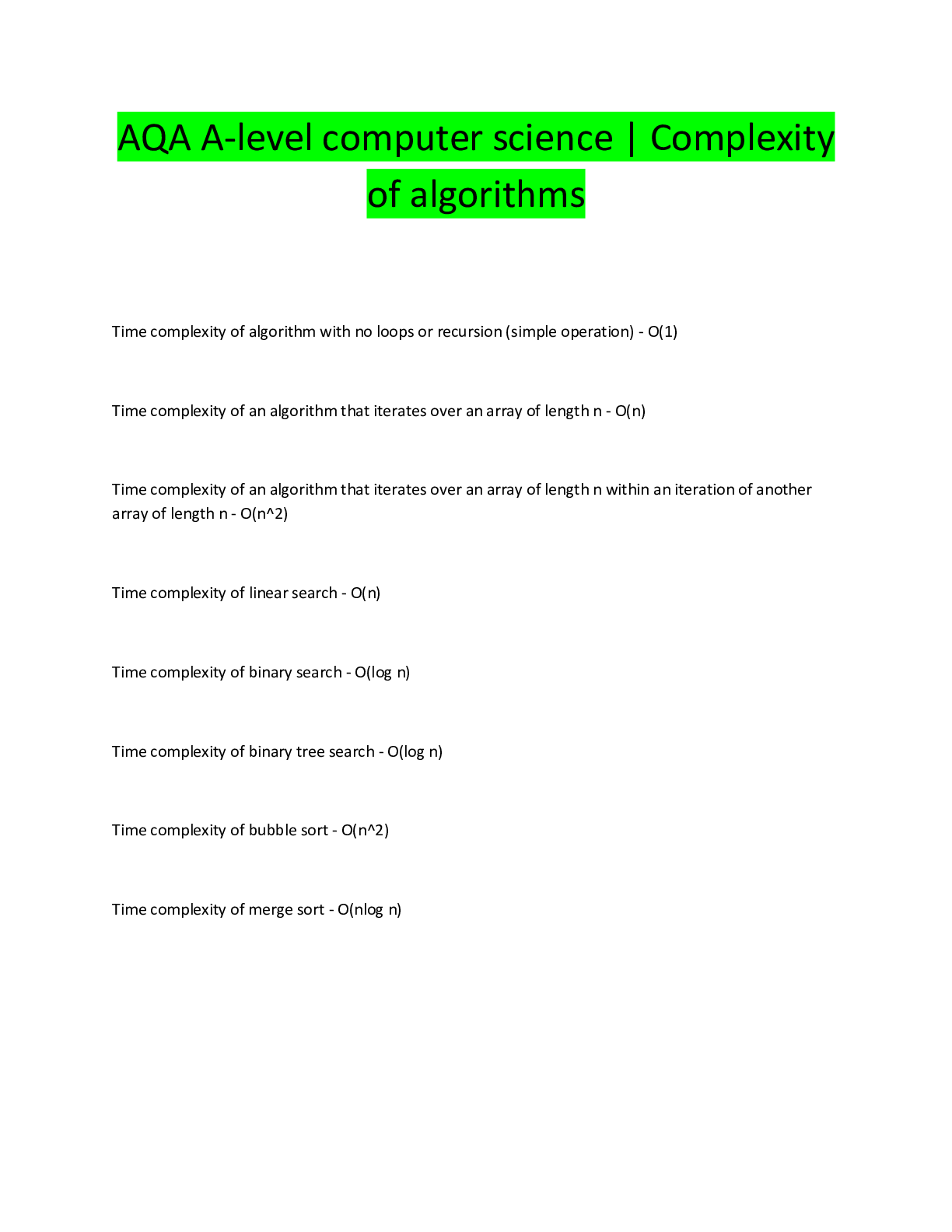
Buy this document to get the full access instantly
Instant Download Access after purchase
Buy NowInstant download
We Accept:

Reviews( 0 )
$8.00
Can't find what you want? Try our AI powered Search
Document information
Connected school, study & course
About the document
Uploaded On
Jun 22, 2022
Number of pages
18
Written in
All
Seller

Reviews Received
Additional information
This document has been written for:
Uploaded
Jun 22, 2022
Downloads
0
Views
193
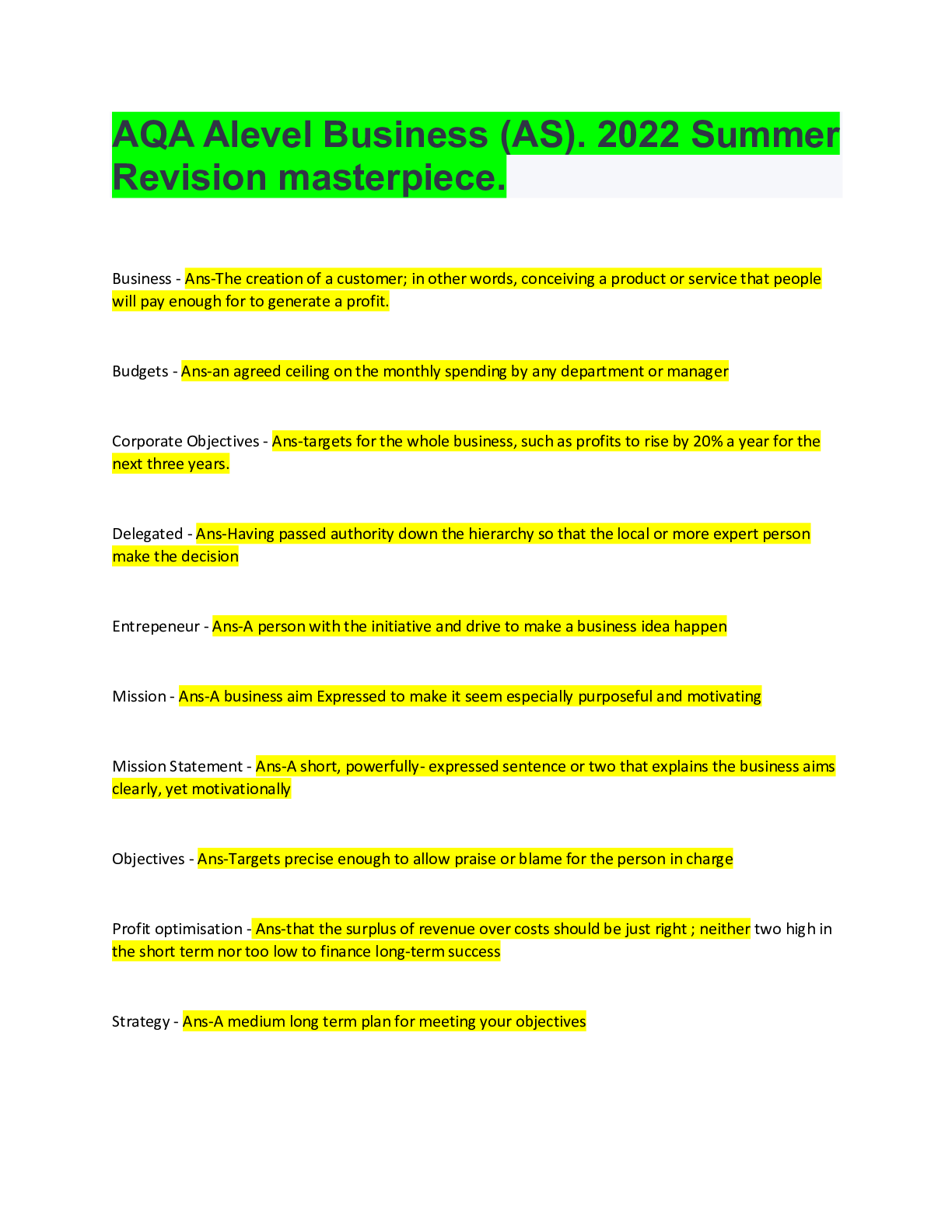

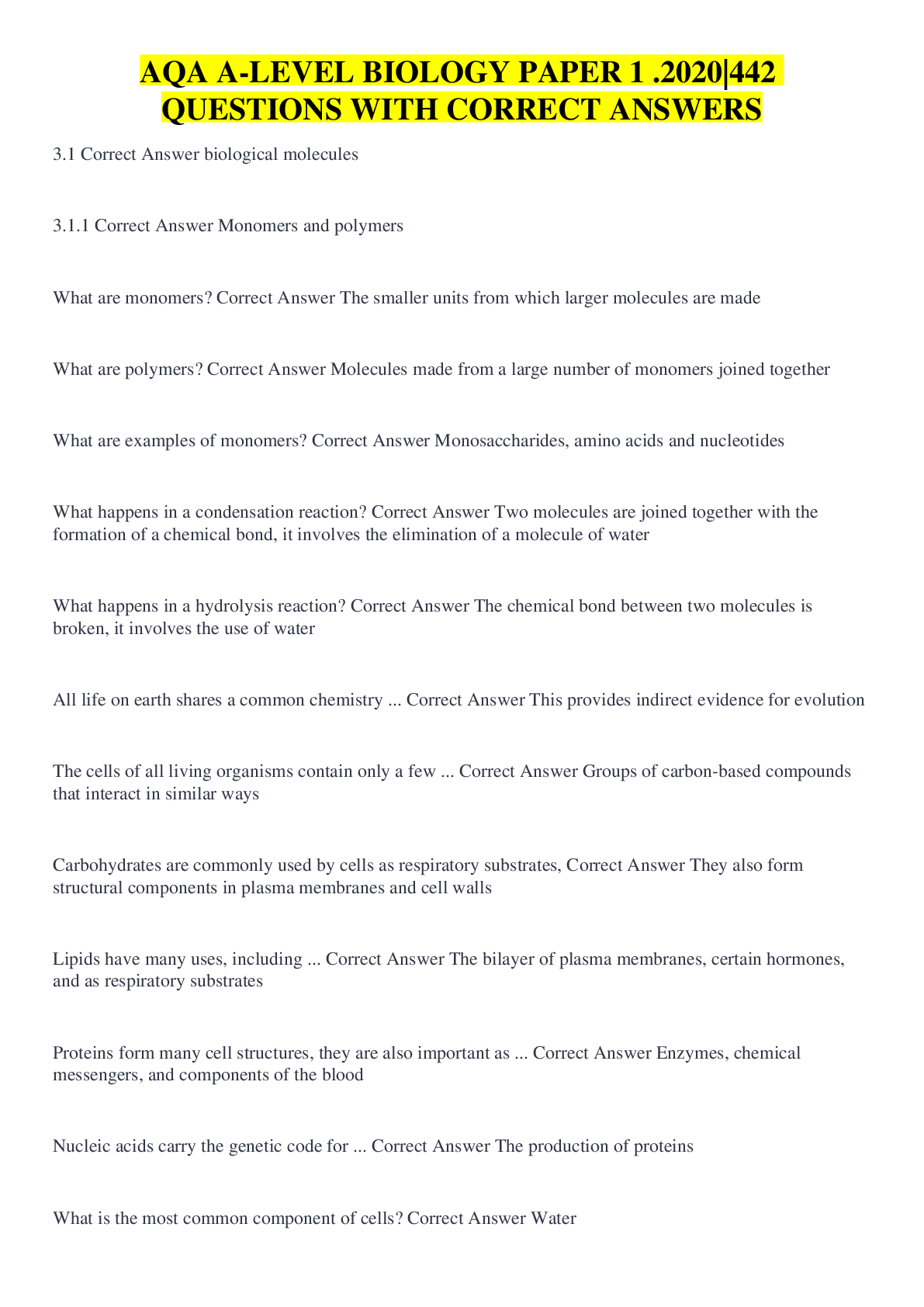

.png)
.png)
.png)
